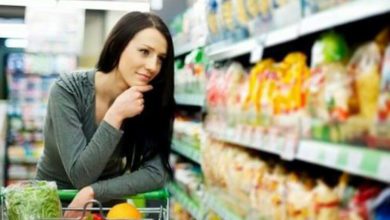Retailing sale of goods and services

Retailing sale of goods and services. Retailing is all activities of selling goods and services directly to final consumers for personal and household use, not for business purposes.
If a manufacturing institution, wholesaler or retail store sells something to end consumers for non-business use, then it means they have made retail sales. There are four main functions of retailing, namely:
- Purchase and store items.
- Transfer the property rights of the goods to the final consumer.
- Provide information regarding the basic nature and use of the goods.
- Providing credit to consumers (in certain cases).
What is meant by a retailer or retail store is a company whose main function is to sell products to end consumers for personal and household use.
Emphasis on certain main functions to show that the retailer is an institution that can stand alone. Manufacturers and farmers can also act as retailers, but their primary function is not to sell products to final consumers but to produce goods and farm.
Exceptions are given to service retailing where the retailer, in this case, is also a manufacturer.
1. Choose a retail store
In choosing a retail store, buyers consider many things. The factors to be considered are related to their economic needs. On the other hand, emotional needs (such as prestige) also sometimes influence their choices. Relevant economic factors in choosing a retail store include:
- Price. There are retail stores that set fixed prices (such as supermarkets and department stores) and some that set flexible or negotiable prices (such as discount stores).
- Conveniences, such as easy parking, being able to leave quickly after paying, and easily finding the desired item (covering the process of finding, comparing, and selecting).
- The quality of the products offered.
- Salesperson assistance. Does it have to be self-service, help passively, or help actively.
- Reputation for honesty and fairness in buying and selling
- The value offered, namely the difference between total customer value and total customer cost. Total customer value is a set of benefits that customers expect from products and services, including product value (eg reliability, durability/durability, performance), service value (delivery of goods, training, installation, maintenance, repair), personnel value (competent, responsive, empathetic, trustworthy), and image value (company image). While the total customer cost consists of the price paid, time costs, energy costs, and psychological costs.
- Special services are offered such as free shipping, credit purchases and being able to return or exchange items that have been purchased.
2. Retail types
Meyer classifies retailing based on five criteria, namely the type of ownership, products or services sold, non-store retailing, pricing strategy, and location.
Each of these types of retailing will be discussed briefly in the following sections. Based on the type of ownership, retailing can be grouped into three types, namely:
a. Independent retail firm,
Retailing sale of goods and services. Namely a retail outlet that is owned and operated independently and without affiliation (merger). For example: stalls, kiosks, or grocery stores owned by individuals, whether located in regional markets, Presidential Instruction markets, traditional markets, residential areas, shophouses, or other locations. This also includes outlets managed by cooperatives.
b. Franchise (franchising),
a system of marketing or distribution of goods and services, in which a holding company (franchisor) grants individuals or other companies (franchisees) that are small or medium scale with privileges to conduct a certain business system through a predetermined manner, for a period of time in a certain place and in a certain place.
Franchisors usually provide equipment, products or services sold, and managerial services. In return, the franchisee must pay an initial franchise fee and royalties on gross sales, paying a management fee. pay franchisor equipment rental fees (if any), as well as market products and services in ways determined by the franchisor.
One of the advantages of purchasing these franchise rights is remaining independent (though not completely), but benefiting from the brand name and from the experience of the franchise network.

There are three forms of franchising systems
Namely first, product franchise. Also known as product distribution franchising or the Coca-Cola beverage company model franchising, franchisors provide flexibility for franchisees to produce and distribute certain product lines using brand names and marketing systems. defined/developed by the franchisor. For example, agency for shoes, cars (Ford, Honda), gas stations, and soft drinks (Coca-Cola).
The second most common and widely developed form today is business format franchising (entrepreneurship franchising). In this form, the franchisor expands its business by opening outlets managed by franchisees who are interested in opening a business with them.
This form of franchising is widely developed in the fast-food restaurant industry (eg Kentucky Fried Chicken and McDonald’s).
While the third form is the business opportunity venture. The franchisor designs a distribution channel system, then the franchisee distributes goods/services according to the system set by the franchisor.
The products/services distributed are not products/services produced by the franchisor. An example is the distribution of motor vehicle components.
In Indonesia, the form of franchising is starting to be in great demand and its development is quite rapid. However, up to March 1996, this business was still dominated by foreign franchisors (119 companies or 78.8%), where the majority were from the United States (about 76%) and the remaining 2% came from Australia, Japan, Singapore, English, Filipino, Italian, French, and others.
Meanwhile, there were only 32 Indonesian franchisors (21.2%), including California Fried Chicken, Ny Suharti Fried Chicken, Mbok Berek Fried Chicken, Ny Tanzil Fried Chicken, Es Teler 77, Rudy Hadisuwarno Salon, and Widyaloka.
c. Corporate chains,
Retailing sale of goods and services. Namely a group consisting of two or more businesses/businesses that are interrelated or connected under one management and owned by a group of shareholders. This can take the form of department store networks, supermarkets, specialty stores, and superstore networks.
Examples are Matahari Group, Ramayana Group, Robinson Group, Cahaya Group, Hero Group, and others. The advantages of this corporate chain are high sales volume, the ability to buy in very large quantities, and the ability to hire employees with special skills in the development of sales promotion materials.







